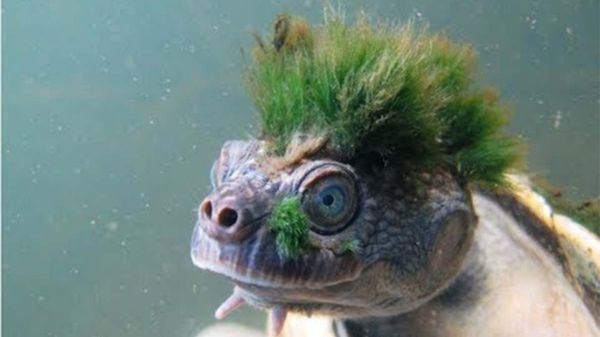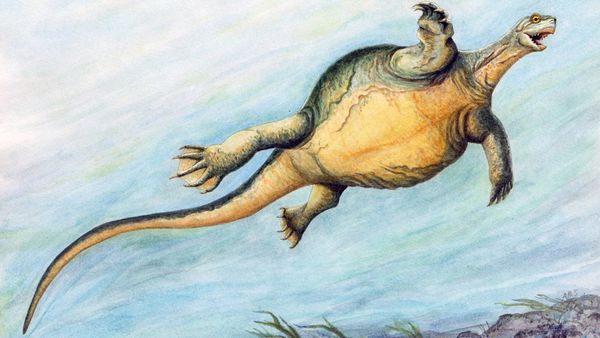"Turtles and tortoises look different because of where they live," says Smith. "A sea turtle is only found in the ocean — the females are the only ones that come on land, and it's just to lay eggs. They have four legs, but the front legs are almost like wings or paddles — they're not great for moving around on land at all because they're adapted for swimming quickly. Their shells have a low, flat profile for cutting through the water."
Compare that to a Galápagos tortoise (Chelonoidis nigra), whose body can weigh up to 920 pounds (417 kilograms), with stocky, elephantine legs, a high-domed shell and big scales on their exposed skin to protect them from predators. They wouldn't last long in the ocean — but luckily they don't have to.
"For the most part, there's not really one characteristic that tells you whether something is a tortoise or a turtle," says Smith. "But it's pretty clear if you see a little turtle on the side of the road and it has a sort of flattened shell profile, webbed feet in the back, smooth skin and some brighter colors, that's going to be a turtle. Tortoises have a heavier, more domed shell and subdued colors."
As usual, terminology is confusing. Box turtles, for instance, which are widespread in the United States and Central America, don't really swim or spend any time in the water, but they're still considered turtles rather than tortoises. And then there are terrapins, which is the name given to aquatic turtles in the U.K. In the U.S., aquatic turtles are just called "turtles," with the exception of the diamondback terrapin (Malaclemys terrapin), which lives in brackish water in tidal marshes in the eastern U.S.



